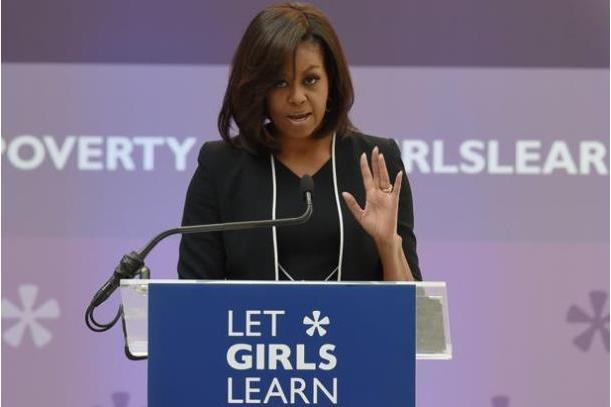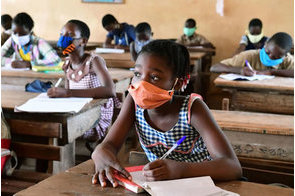Michelle Obama urges policymakers to invest in girl-child education

Summary
By 2020, the World Bank expects to invest at least $2.5 billion in education projects targeting adolescent girls.
United States First Lady Michelle Obama has called on policymakers around the world to support the education of adolescent girls. She stated this at the Let Girls Learn event which held on Wednesday at the ongoing World Bank Group-IMF Spring Meetings in Washington DC.
The Let Girls Learn is a United States government initiative to ensure adolescent girls get the education they deserve. Statistics have shown that more than 62 million girls around the world are out of school and half of them are adolescents, while several others are struggling to stay in school.
President of the World Bank, Jim Yong Kim, announced at the event that by 2020 the Bank expects to invest at least $2.5 billion in education projects targeting adolescent girls (ages 12-17). He said the empowerment of girls is central to the Bank's development efforts.
“I’m very excited to join the First Lady in announcing this major boost in funding for adolescent girls’ education,” said World Bank Group President Jim Yong Kim. “Empowering and educating adolescent girls is one of the best ways to stop poverty from being passed from generation to generation, and can be transformational for entire societies. This increased funding will help provide countries, especially in regions like Sub-Saharan Africa and South Asia, with the tools to expand access to quality education so that all adolescent girls can go to school and reach their full potential.”
While highlighting the transformative power of the investment in adolescent girls, the U.S. First Lady said, “This isn’t just a breathtaking investment of resources, it’s also a powerful statement of mission – it’s an expression of our belief in the power of education to transform the lives and prospects of millions of girls worldwide – as well as the prospects of their families, communities and countries. The evidence is very clear: when we invest in girls’ education, and we embrace women in our workforce, that doesn’t just benefit them, it benefits all of us.”
Research shows that educating girls has a multiplier effect: better educated women tend to be healthier, participate more in the formal labour market, earn more income, give birth to fewer children, marry at a later age, and provide better health care and education to their children.
The World Bank says its global strategy for gender equality involves financing and analytical work in support of removing financial barriers that keep girls out of school, delaying child marriage, improving access to reproductive health services, and strengthening skills and job opportunities for adolescent girls and young women.
“Today’s commitment represents a major step toward implementing the goals of this strategy as well as helping achieve the 2030 Sustainable Development Goal 4, which calls for access to quality education and lifelong learning for all, and Goal 5 to achieve gender equality and empowerment of all women and girls,” the World Bank said in a statement.
About 75 percent of the investments is expected to be from IDA, the Bank’s fund for the poorest countries, and largely in Sub-Saharan Africa and South Asia, which have the highest number of out-of-school girls.
Related
-
UN calls for $1.5bn in urgent funding for children impacted by crisis
Recent analysis from ECW indicates that as many as 222 million crisis-impacted girls and boys are in need of urgent ...
-
NDDC officials tour post-graduate training facilities at UK university
NDCC funds scholarships for post-graduate students at the Robert Gordon University.
-
Why Nigeria is lacking expertise
In some universities in Nigeria, students in the sciences have never handled a micropipette to work with it.







